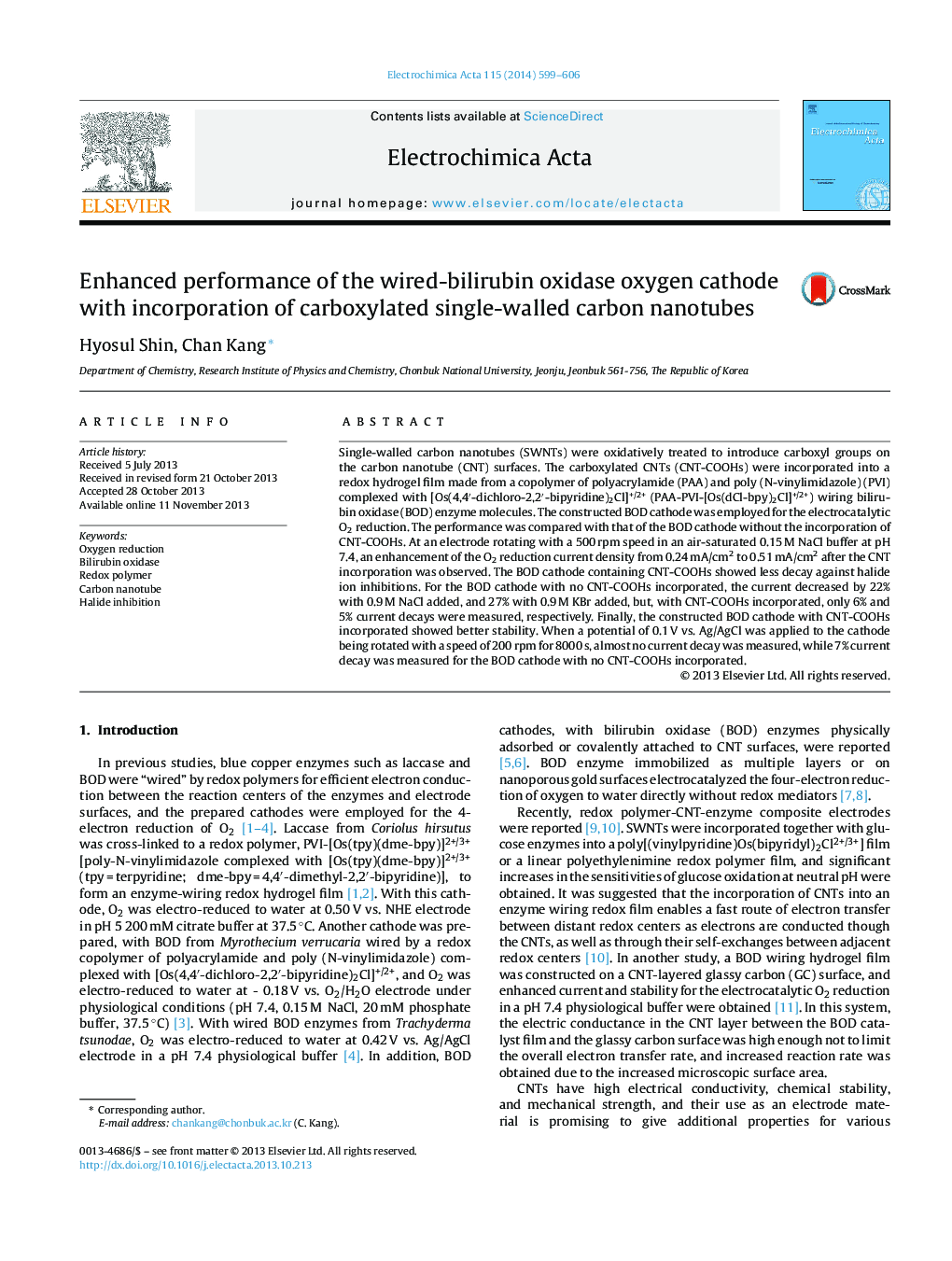| Article ID | Journal | Published Year | Pages | File Type |
|---|---|---|---|---|
| 6614517 | Electrochimica Acta | 2014 | 8 Pages |
Abstract
Single-walled carbon nanotubes (SWNTs) were oxidatively treated to introduce carboxyl groups on the carbon nanotube (CNT) surfaces. The carboxylated CNTs (CNT-COOHs) were incorporated into a redox hydrogel film made from a copolymer of polyacrylamide (PAA) and poly (N-vinylimidazole) (PVI) complexed with [Os(4,4â²-dichloro-2,2â²-bipyridine)2Cl]+/2+ (PAA-PVI-[Os(dCl-bpy)2Cl]+/2+) wiring bilirubin oxidase (BOD) enzyme molecules. The constructed BOD cathode was employed for the electrocatalytic O2 reduction. The performance was compared with that of the BOD cathode without the incorporation of CNT-COOHs. At an electrode rotating with a 500Â rpm speed in an air-saturated 0.15Â M NaCl buffer at pH 7.4, an enhancement of the O2 reduction current density from 0.24Â mA/cm2 to 0.51Â mA/cm2 after the CNT incorporation was observed. The BOD cathode containing CNT-COOHs showed less decay against halide ion inhibitions. For the BOD cathode with no CNT-COOHs incorporated, the current decreased by 22% with 0.9Â M NaCl added, and 27% with 0.9Â M KBr added, but, with CNT-COOHs incorporated, only 6% and 5% current decays were measured, respectively. Finally, the constructed BOD cathode with CNT-COOHs incorporated showed better stability. When a potential of 0.1Â V vs. Ag/AgCl was applied to the cathode being rotated with a speed of 200Â rpm for 8000 s, almost no current decay was measured, while 7% current decay was measured for the BOD cathode with no CNT-COOHs incorporated.
Related Topics
Physical Sciences and Engineering
Chemical Engineering
Chemical Engineering (General)
Authors
Hyosul Shin, Chan Kang,
